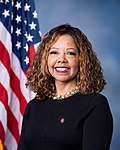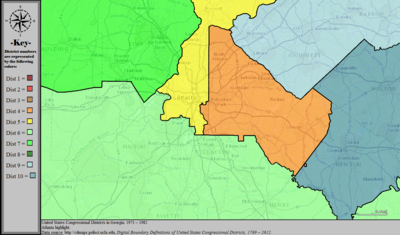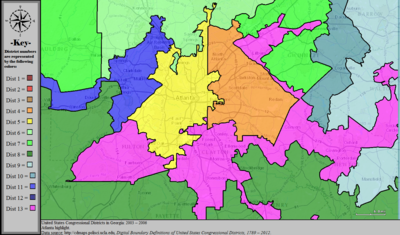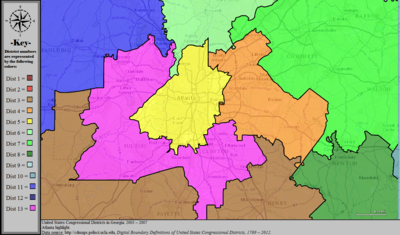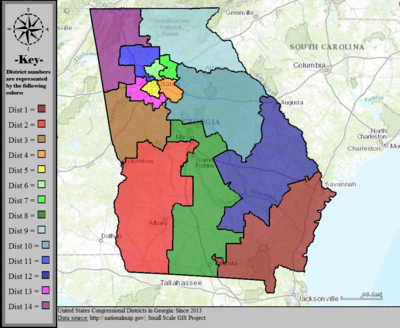
Interactive map version

Interactive map version
Georgia is represented in the United States House of Representatives by 14 elected representatives, each campaigning and receiving votes in only one district of the 14.
Contents
- Current districts and representatives
- Historical and present district boundaries
- See also
- References
- External links
- Current maps and statistics
- 2007-2013 statewide maps
- 2007-2013 regional detail maps
After the 2000 census, the State of Georgia was divided into 13 congressional districts, increasing from 11 due to reapportionment. The state was redistricted again in 2005, and 2007, although the number of districts remained 13. In 2013, the number of representatives increased again with rising population to 14 members.










